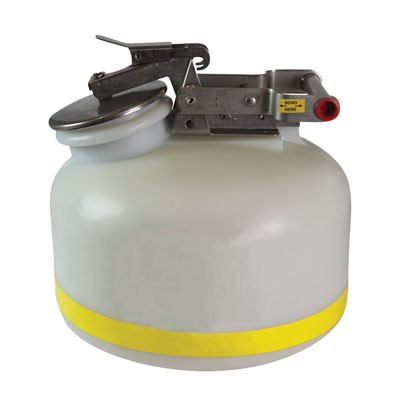Leading Liquid Waste Disposal Melbourne: Trusted Solutions for Proper Waste Administration
Leading Liquid Waste Disposal Melbourne: Trusted Solutions for Proper Waste Administration
Blog Article
Just How Liquid Waste Disposal Works: A Thorough Review of Methods and Technologies Employed

Review of Liquid Waste Types
The complexity of fluid waste kinds demands a comprehensive understanding of their features and implications for disposal. Liquid waste can extensively be classified right into a number of types, including industrial, metropolitan, farming, and harmful waste. Each classification displays unique homes, needing certain administration techniques to mitigate ecological and wellness dangers.
Industrial liquid waste stems from making processes and often includes a variety of contaminants, such as heavy metals, solvents, and organic compounds. Metropolitan liquid waste, primarily consisting of wastewater from homes and business facilities, consists of organic issue, nutrients, and virus (industrial wastewater treatment). Agricultural liquid waste, including runoff from ranches, may consist of plant foods, pesticides, and pet waste, presenting risks to water high quality and environments
Dangerous fluid waste is characterized by its toxicity, sensitivity, or possible to trigger injury. Recognizing these varied fluid waste kinds is crucial for establishing effective disposal approaches and ensuring compliance with ecological guidelines.
Physical Therapy Approaches

Testing is the preliminary step, where bigger bits and debris are removed from the fluid waste utilizing displays or grates. In sedimentation storage tanks, heavier fragments clear up at the bottom, creating a sludge layer, while the cleared up liquid can be additional dealt with.
Purification is another important technique that entails passing the fluid via porous materials, such as sand or membranes, to capture smaller fragments. This action enhances the top quality of the liquid, making it ideal for subsequent treatment processes.

Chemical Treatment Strategies
Chemical treatment methods are essential for efficiently managing fluid waste, particularly in attending to dissolved and colloidal pollutants that physical approaches may not appropriately remove. These strategies utilize different chemical representatives to neutralize, precipitate, or change unsafe compounds into much less harmful types.
One usual approach is coagulation and flocculation, where chemicals such as alum or ferric chloride are included in promote the gathering of put on hold particles. This process improves sedimentation, permitting for much easier removal of the resulting sludge. In addition, oxidation procedures, utilizing representatives like chlorine or ozone, are used to damage down complex organic compounds and microorganisms, making the waste more secure for discharge or more therapy.
Neutralization is another vital method, which readjusts the pH of acidic or alkaline waste streams to neutral degrees, protecting against possible injury to downstream systems and the my site setting. Furthermore, advanced oxidation processes (AOPs) utilize combinations of oxidants and ultraviolet light to weaken persistent pollutants, accomplishing a higher level of treatment effectiveness.
Organic Treatment Processes
Organic therapy procedures play an essential duty in the monitoring of fluid waste by making use of bacteria to decay raw material and minimize impurity degrees. These processes can be extensively categorized into anaerobic and aerobic therapies, each using specific microbial neighborhoods to accomplish effective waste degradation.
Aerobic therapy entails using oxygen to assist in the failure of natural materials by microorganisms. This procedure is commonly implemented in activated sludge systems, where oygenation containers give a favorable atmosphere for microbial development, bring about the oxidation of organic pollutants. The resultant biomass can be divided from treated effluent via sedimentation.
In comparison, anaerobic therapy occurs in the lack of oxygen, depending on different microorganisms to break down natural issue. This method is specifically helpful for high-strength waste, as it generates biogas, a renewable resource resource, while decreasing sludge production. Technologies such as anaerobic digesters are often utilized in industrial and metropolitan applications.
Both cardiovascular and anaerobic organic therapies not only lessen the ecological effect of liquid waste however also promote resource healing, see this here making them essential parts of sustainable waste administration techniques. Their effectiveness, flexibility, and efficiency support their extensive execution across numerous sectors.
Emerging Technologies in Disposal
Cutting-edge methods to liquid garbage disposal are swiftly evolving, driven by improvements in modern technology and an increasing emphasis on sustainability. Amongst these emerging innovations, membrane layer bioreactors (MBRs) have actually gained traction for their ability to combine biological treatment with membrane purification, causing top quality effluent that can be reused in different applications. MBRs make it possible for smaller sized impacts and extra reliable procedures compared to typical systems.
Another promising development is the use of anaerobic digestion combined with nutrient recovery modern technologies, which not only deals with fluid waste however likewise produces biogas and recovers useful nutrients like nitrogen and phosphorus. This twin advantage boosts source effectiveness and decreases environmental impact.
Additionally, progressed oxidation procedures (AOPs) are being embraced for the deterioration of complex natural pollutants. These approaches utilize powerful oxidants and catalysts to damage down pollutants at the molecular level, offering a very reliable option for challenging waste streams.
Moreover, the assimilation of fabricated intelligence and artificial intelligence in waste monitoring systems is enhancing operational performance and anticipating upkeep, bring about minimized costs and boosted environmental compliance. These modern technologies reflect a significant change towards even more sustainable and effective fluid waste disposal techniques.
Final Thought
In conclusion, reliable liquid waste disposal necessitates a thorough understanding of various strategies and technologies. By continuously progressing these approaches, it becomes possible to deal with the expanding challenges linked with liquid waste, inevitably adding to environmental defense and resource healing.
Fluid waste disposal is an essential aspect of ecological monitoring, requiring an extensive understanding of numerous techniques and technologies tailored to different waste types. Liquid waste can extensively be categorized into a number of kinds, including industrial, municipal, farming, and unsafe waste. Agricultural liquid waste, including drainage from ranches, might contain plant foods, chemicals, and pet waste, posturing threats to water high quality and ecological communities.
Numerous physical therapy techniques play a vital role in handling fluid waste efficiently - industrial wastewater treatment.In conclusion, reliable liquid Clicking Here waste disposal demands a thorough understanding of numerous strategies and innovations
Report this page